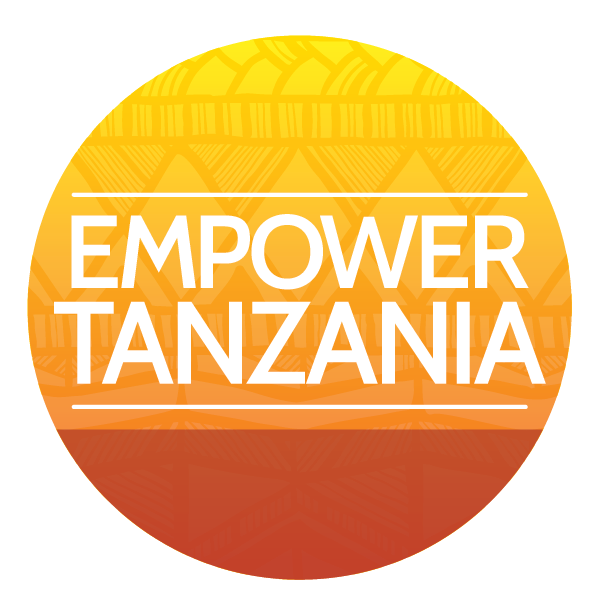Reaching for Water
Read this post by Sheri Krumm, Empower Tanzania Board Member and Clean Water Advocate, to learn about EMPOWER TANZANIA’S plans to bring clean water within the reach of thousands of rural Tanzanians…
The Reaching for Water Program was inspired in 2009 by a visit to the people of Katahe, a small Maasai village near the Pangani River in the Same District of northeast Tanzania. Katahe is a sub-village of Hedaru where Empower Tanzania had begun working on a water project. During our time in this village, we grew to know and love the strong, resilient people of the desert.
On this particular visit, the people of the village brought us a young boy of about 12 who had been attacked by a crocodile while collecting water from the river. A year later, his arm was completely useless—and still oozing from the wound. My heart broke and I suddenly understood that living near a river in Tanzania does NOT solve your water problems. Unfortunately, it simply adds animal attacks to your list of challenges.
We began to dream of water projects that day and we began to explore what the options were for bringing safe, clean water to the area. The District Government had no funding to bring any kind of infrastructure to this remote area. We quickly realized that if it was going to happen, it was going to be an NGO that would do it.
From that day in October of 2009, it was many years before Katahe hit the radar again, but in 2014, we knew it was time to act. We had a second site in another Maasai village called Pangaro where an Empower Tanzania clinic is located, and that site needed a well too. Their well had failed, so we agreed to dig a new one nearby. The time had come for Empower Tanzania to launch The Reaching for Water Program!!
PHASE 1: DIG A BOREHOLE AT KATAHE
April 2015 Digging wells in Tanzania is always a gamble. In spite of the best surveys, you never know if you will hit water…until you do. Our first attempt to dig a well at Katahe failed, but it taught us an incredible lesson. More often than not, the drillers are failing to produce viable wells in arid areas of Tanzania because they lack a basic drilling technique common in the US. It is simple, inexpensive, and keeps upper level “rivers”—which are typically salty—from leaching down the casement hole to the fresh, deep water below.
PHASE 1B: CONDUCT A WELL DRILLING SEMINAR IN SAME, TANZANIA
May 2016 Thanks to a partnership between Justin Rewerts of Rewerts Drilling Company in Nevada, IA, the Ames Rotary Club, and Empower Tanzania, we have an opportunity to not only solve our own problem with drilling, but impact virtually every rural drilling effort from now on! In May, Justin Rewerts and several other Iowa drillers will conduct a seminar with at least six of the Same and Mwanga District drilling companies, teaching their employees and well mechanics a key technique for casing wells that will dramatically increase their chances of successful wells in the arid areas.
How will they do this?
As part of the training, the companies will drill three boreholes for practice. One will be for a Rotary Project in the area. And the other two? Katahe and Pangaro Maasai villages!
PHASE 2: INSTALL PUMPS AND A POWER SOURCE
Mid to late 2016 Once the boreholes are complete, they will be capped, the water will be tested, and the flow rates will be measured. Based on that information, we will choose pumps and power sources. The most likely candidates are wind power and solar power.
PHASE 3: INSTALL TANKS, DISTRIBUTION SYSTEMS, AND CATTLE TROUGHS FOR THE ANIMALS
Early 2017 In Katahe, there is no infrastructure and people live over a vast area of land, including in the nearby villages of Gunge and Mabilioni. Once flow rates determine how many people can be served by the new well, we will install the distribution system, piping the water to distribution points or faucets. This will require a raised tank to allow gravity flow. If there is enough water, we will also include a cattle trough to water the animals and generate revenue for repairs and maintenance of the system.
In Pangaro, some infrastructure exists from the previous well, but it will need some repair work and possible expansion to bring water to the areas people live. A cattle trough will not be necessary in Pangaro, as they have a very large watering hole nearby for animals.
PHASE 4: LATRINES & PUBLIC EDUCATION
Mid to Late 2017 Many things change in a community when you add water. One is that residents have the ability to use toilets and showers in private—a luxury these people have never had. We will install a public latrine with a private shower area near the church and clinic in both locations allowing public gatherings with sanitary and private toilet facilities. This will also allow the Pangaro Clinic to remain in operation, as the Tanzanian government requires a public latrine within two years of a clinic opening.
Adding water also creates a need for public education about how to make and keep safe water, how to use “gray” water efficiently, and, in the case of Maasai who are traditionally herders, how to begin growing vegetables. Local people will need to be trained to collect the money for the water and save it for repairs and technicians will be trained to manage and repair the system.

